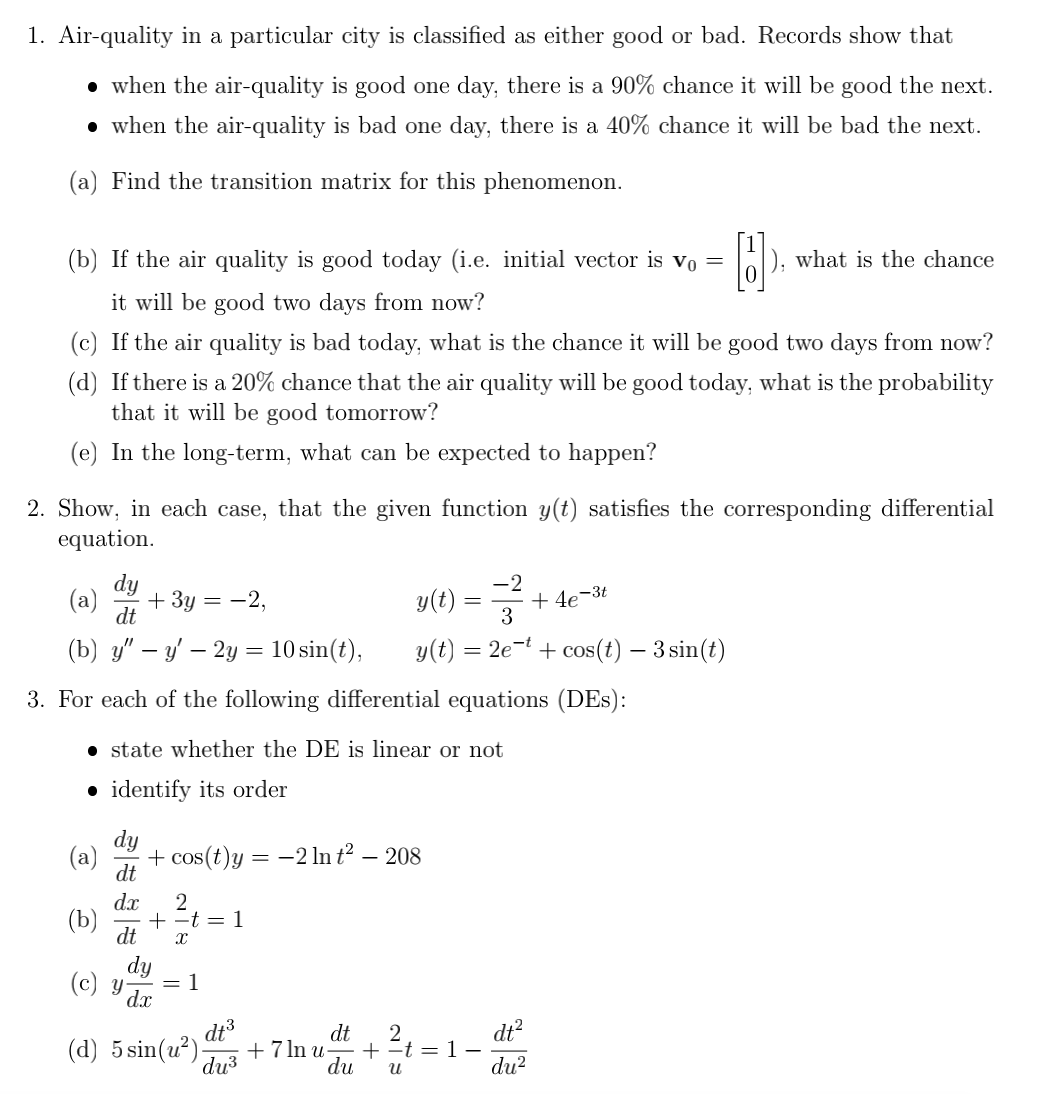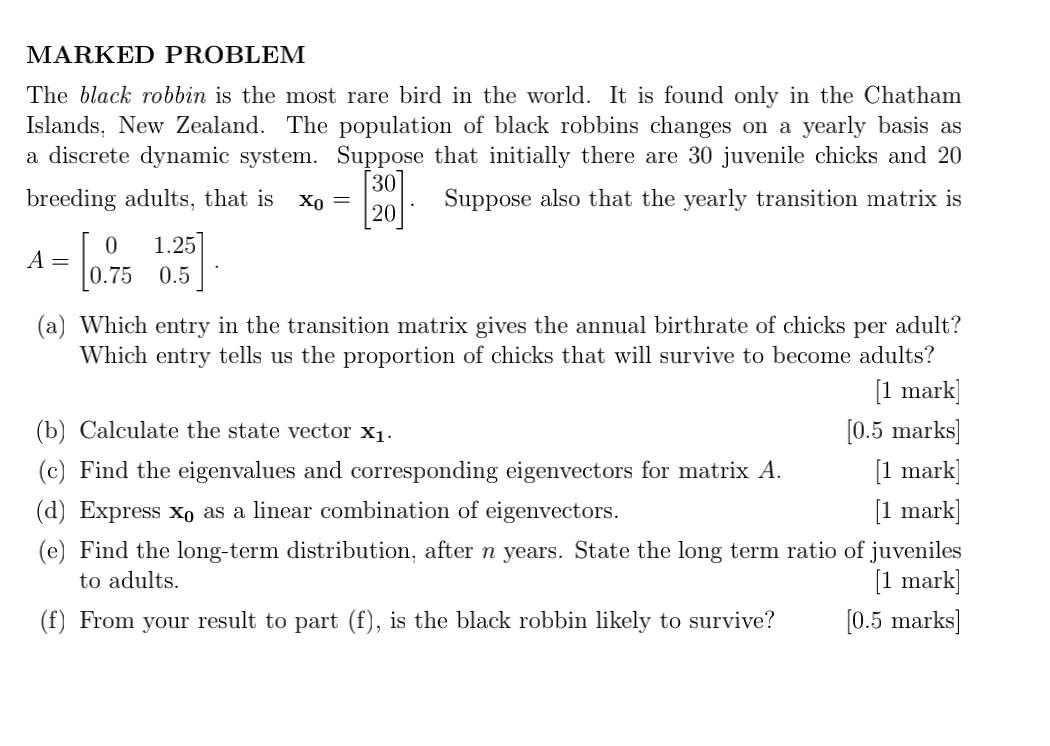Differential equation
1. Airquality in a particular city is classied as either good or bad. Records show that 0 when the airquality is good one day, there is a 90% chance it will be good the next. a when the airquality is bad one day, there is a 40% chance it will be bad the next. (3} Find the transition matrix for this phenomenon. 1 (b) If the air quality is good today (i.e. initial vector is v0 = [0 1], what is the chance it will be good two days from now? (c) If the air quality is bad today, what is the chance it will be good two days from now? (d) If there is a 20% chance that the air quality will be good today, what is the probability that it will be good tomorrow? (e} In the longterm, what can be expected to happen? 2. Show, in each case, that the given function y(t] satises the corresponding differential equation. 2 dz; _ =_2 t= 4-3t {a} (it-+33; , y() 3 + e (bl y" if)" 2y = 10sin(t), y(t] = 2et + cos(t] 3sin(t) 3. For each of the following differential equations (DEs): a state whether the DE is linear or not 0 identify its order d (a) (T? + cos(t)y = 21m2 208 d3: 2 b =1 (} {n+1} dy _ (Cl ya 1 dt3 dt 2 at? d ' 2 + l + t 1 ( } 5SlIl('H. )du3 7 nudu u do? MARKED PROBLEM The black robbin is the most rare bird in the world. It is found only in the Chatham Islands, New Zealand. The population of black robbins changes on a yearly basis as a discrete dynamic system. Suppose that initially there are 30 juvenile chicks and 20 breeding adults, that is X0 = [:3]. Suppose also that the yearly transition matrix is 0 1.25 A _ [0.75 0.5[ ' (3] Which entry in the transition matrix gives the annual birthrate of chicks per adult? Which entry tells us the proportion of chicks that will survive to become adults? [1 mark: (h) Calculate the state vector x1. [0.5 marks: (c) Find the eigenvalues and corresponding eigenvectors for matrix A. [1 mark: (d) Express x0 as a linear combination of eigenvectors. [1 mark: (e) Find the longterm distribution, after H years. State the long term ratio of juveniles to adults. [1 mark: (f) From your result to part (f), is the black robbin likely to survive? [0.5 marks








